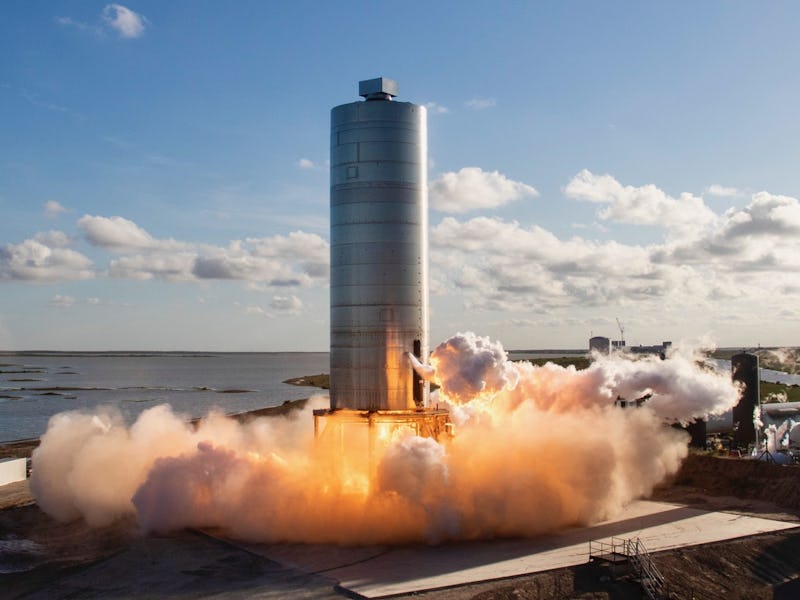Musk Reads: Starship's Raptor engine reaches new power levels
SpaceX successfully launches the 11th batch of Starlink satellites and Starship’s Raptor engine reaches all-new power levels.

SpaceX successfully launches the 11th batch of Starlink satellites and Starship’s Raptor engine reaches all-new power levels. It’s Musk Reads: SpaceX Edition #197.
A version of this article appeared in the “Musk Reads” newsletter. Sign up for free here.
Musk quote of the week
“Aloha, welcome back from space”
- Read more about Ms. Tree catching the fairing from SpaceX’s latest mission.
SpaceX
Liftoff! SpaceX successfully launched the 11th batch of Starlink satellites on August 18 from Cape Canaveral. The mission was notable for being SpaceX’s 100th, as well as the first time that SpaceX had successfully launched and landed the same booster six times after landing on the Of Course I Still Love You drone ship. SpaceX launched 58 satellites for its increasingly large Starlink internet connectivity constellation, as well as three satellites for Planet as part of a ridesharing deal.
Where to next? Musk shared last week that the company could, in theory, reuse a rocket more than 100 times. The economics of reusing a rocket mean that SpaceX is “definitely” ahead after the third flight. Musk wrote on Twitter that “we will push for ten flights with Starlink,” suggesting the company is not about to stop at six. But while the Falcon 9 could reach new levels of reusability, the upcoming Starship’s fully reusable design could make reusing a rocket easier than ever. Read more.
What’s next for SpaceX: SpaceX is set to launch the SAOCOM 1B satellite on August 27 at 7:19 p.m. Eastern time. The Falcon 9 will send up a satellite for Argentina’s space agency that will help monitor environments during emergencies. The mission is set to launch from Space Launch Complex 40 at the Cape Canaveral Air Force Station in Florida.
The following day, on August 28, SpaceX is expected to send up the “SN6” prototype of the Starship to a height of 150 meters near its Texas facility. Reporter Michael Baylor claimed via Twitter that the firm will have backup opportunities on August 29 and 30, and the windows are 8 a.m. to 8 p.m. each day.
In other Musk news…
- The Crew Dragon capsule that will send up four astronauts on October 23 arrived in Florida on August 18, NASA revealed last week.
- Musk has praised a “very impressive” fan render that shows the Starship embarking on a 20-kilometer test flight. Read more.
- The Starship’s Raptor engine has reached all-new power levels, hitting 330 bar of chamber pressure. The new record is 31 bar higher than the previous record shared in February 2019. Read more.
- What’s Starship all about? Inverse has put together an explainer to help get you up to speed. Read more.
- Neuralink’s next event is expected to take place on Friday. Read more.
Musk Reads mailroom
Elizabeth Jane writes:
Seeing the map showing Mars with oceans I wondered whether Elon Musk was considering supplying Mars colonists with food using aquaculture? Water, or at least water-ice, is readily available on Mars. If enclosed reservoirs of heated and aerated water were stocked with fish, shellfish, water plants like watercress and seaweed and food for the fish under canopies providing atmospheric pressure, couldn’t this be a valuable source of food for the colonists?
All of the materials for doing this, soil, water, air, are available on Mars. All that is needed is tanks, heaters and pumps. The fish could be transported as frozen eggs and sperm, the plants could be cloned, and fish-food could also be cultivated on Mars such as through micro-organism and krill bioreactors, and worm-farms in soil mulched with biological waste material, or compost. Fish, shellfish and water-plants would provide a tasty and nutritious form of protein and vitamins and natural minerals, greatly diversifying colonists’ diet and enriching their experience and lifestyle.
Interesting question. In terms of food, Musk mentioned in a February 2019 interview that he would aim to use solar panels to power hydroponics, similar to the ones used on Earth. These use a nutrient-filled solution to make direct contact with soil. They would stay underground, meaning they’d be shielded from solar storms and radiation.
Another idea that’s been suggested is lab-grown meat. Kevin Cannon, a planetary scientist at the University of Central Florida in Orlando, told Space.com that the developing technology used to grow beef burgers and fish from just a few muscle cells could help keep Martians’ diets varied. Depending on how the area develops over the coming years, the lab-grown alternatives may eliminate the need to transport aquaculture on the tough trip to Mars.
Got any comments or queries? Don’t forget to send them over to muskreads@inverse.com.
Photo of the week
SpaceX’s Starlink mission takes off.
Got any photos or videos you’d like to share? Feel free to send them over to muskreads@inverse.com.
The ultra-fine print
This has been Musk Reads: SpaceX Edition #197, the weekly rundown of essential reading about futurist and entrepreneur Elon Musk. I’m Mike Brown, an innovation journalist for Inverse.
- Email me directly at mike.brown@inverse.com and follow Inverse on Twitter @inversedotcom. Follow me on Twitter @mikearildbrown.
- Got any comments or queries? Don’t forget to send them over to muskreads@inverse.com.
What did you think of today’s stories? Hit reply to this email to let us know. Thanks for reading!
A version of this article appeared in the “Musk Reads” newsletter. Sign up for free here.